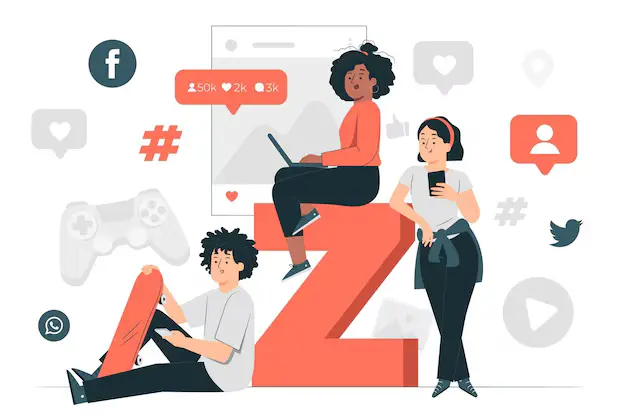Nostalgia marketing, which leverages elements from the past to evoke sentimental feelings, has proven to be an effective strategy for engaging Gen Z (born between 1997 and 2012). Despite being a generation that grew up in the digital age, Gen Z has shown a strong affinity for nostalgic content, particularly from the 1990s and early 2000s. Here’s how nostalgia marketing appeals to Gen Z:
1. Connection to Childhood and Simpler Times
- Gen Z often associates nostalgia with a sense of comfort and simplicity, especially during times of uncertainty or stress. Brands that tap into this sentiment by reviving trends, products, or media from their childhood (e.g., Tamagotchis, flip phones, or early 2000s fashion) create an emotional connection.
- Example: The resurgence of Y2K fashion and aesthetics in brands like Urban Outfitters or the re-release of retro video games like Nintendo’s NES Classic Edition.
2. Shared Cultural Experiences
- Nostalgia marketing often references pop culture, TV shows, music, or memes that were popular during Gen Z’s formative years. This shared cultural touchstone fosters a sense of community and belonging.
- Example: Netflix’s revival of shows like Fuller House or Avatar: The Last Airbender appeals to Gen Z’s fond memories of watching these shows as kids.
3. Digital Nostalgia
- Gen Z is the first generation to grow up with the internet, social media, and early digital technologies. Nostalgia for early internet culture, such as pixelated graphics, dial-up sounds, or old-school social media platforms like MySpace, resonates deeply.
- Example: Brands like Google or Snapchat incorporating retro pixel art or throwback filters in their campaigns.
4. Authenticity and Relatability
- Gen Z values authenticity and transparency in brands. Nostalgia marketing feels genuine because it taps into real memories and experiences, rather than trying to create something entirely new.
- Example: Coca-Cola’s reintroduction of its classic glass bottle design or McDonald’s bringing back discontinued menu items like the McRib.
5. Blending Old and New
- Nostalgia marketing works best when it combines retro elements with modern twists. Gen Z appreciates innovation, so brands that reimagine old trends in a fresh way (e.g., modernizing vintage fashion or remixing classic songs) capture their attention.
- Example: The popularity of vinyl records among Gen Z, paired with modern music streaming features.
6. Social Media and Viral Trends
- Platforms like TikTok and Instagram have become hubs for nostalgic content, with Gen Z users driving trends like #ThrowbackThursday or #90sKids. Brands that participate in these trends or create nostalgic challenges can quickly go viral.
- Example: TikTok’s “Y2K aesthetic” trend, where users recreate early 2000s fashion and makeup looks.
7. Escapism
- In a world filled with rapid technological advancements and global challenges, nostalgia offers Gen Z a form of escapism. It allows them to revisit a time they perceive as simpler or more carefree.
- Example: The popularity of retro gaming consoles or apps that simulate old-school computer interfaces.
8. Influence of Millennial Culture
- Gen Z often looks to Millennials (their older siblings or influencers) for cultural cues. Since Millennials are heavily nostalgic for the 1990s and early 2000s, this sentiment trickles down to Gen Z.
- Example: The resurgence of bands like *NSYNC or the Spice Girls, which were popular with Millennials but are now embraced by Gen Z.
9. Limited-Edition and Exclusivity
- It often involves limited-edition releases or re-releases of classic products, creating a sense of urgency and exclusivity that appeals to Gen Z’s love for collectibles and FOMO (fear of missing out).
- Example: Adidas re-releasing classic sneaker designs or Nintendo’s limited-edition retro gaming consoles.
10. Emotional Storytelling
- Brands that use nostalgia in their storytelling can create powerful emotional connections with Gen Z. By reminding them of happy memories or cultural milestones, brands can build loyalty and trust.
- Example: Apple’s “Behind the Mac” campaign, which features iconic moments in pop culture created using Mac computers.
It resonates with Gen Z because it taps into their emotional connection to the past while offering a sense of comfort, authenticity, and shared identity. By blending retro elements with modern innovation, brands can effectively capture the attention and loyalty of this generation. However, it’s important for brands to approach nostalgia marketing thoughtfully, ensuring it feels genuine and relevant rather than forced or overly commercialized.

